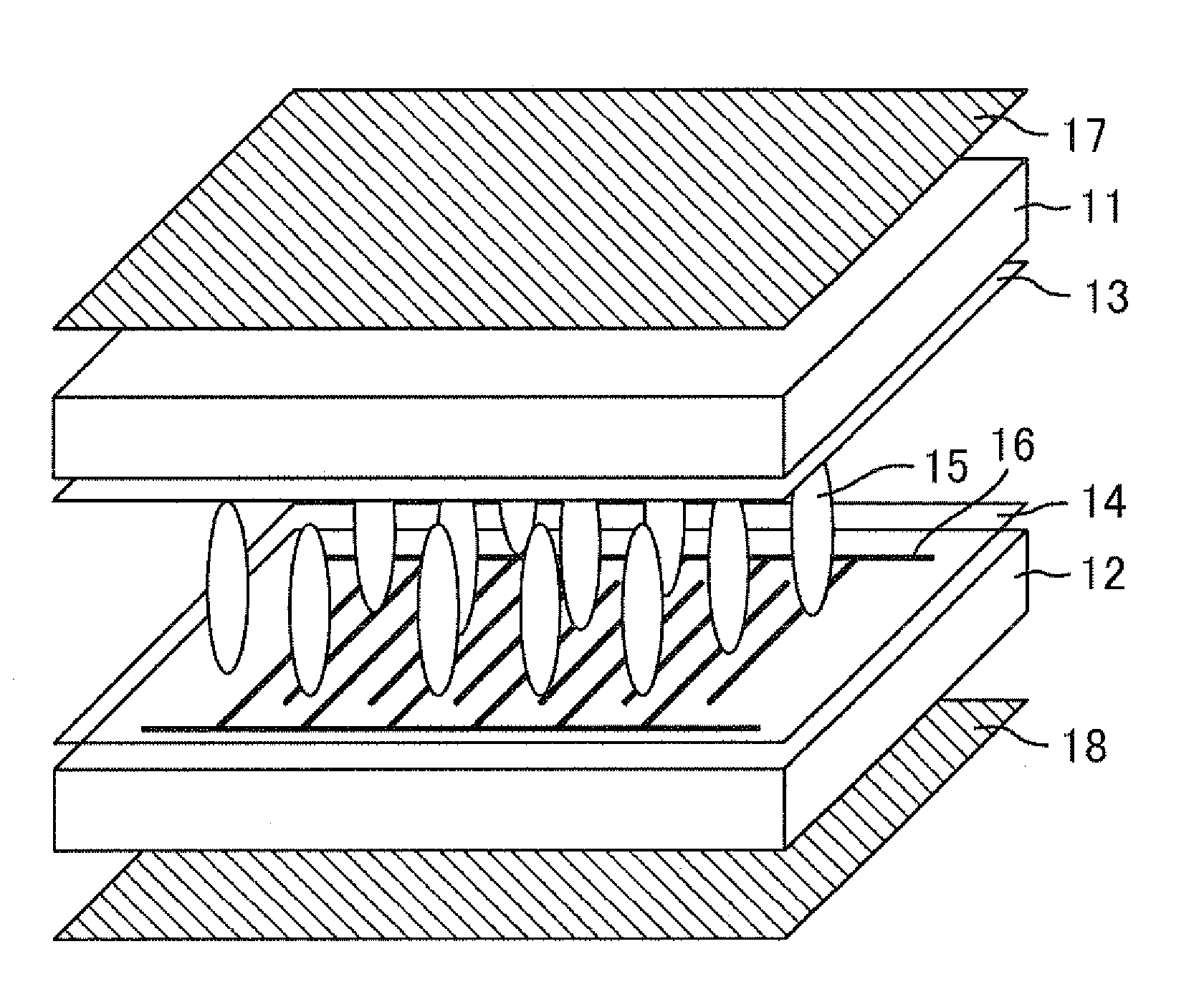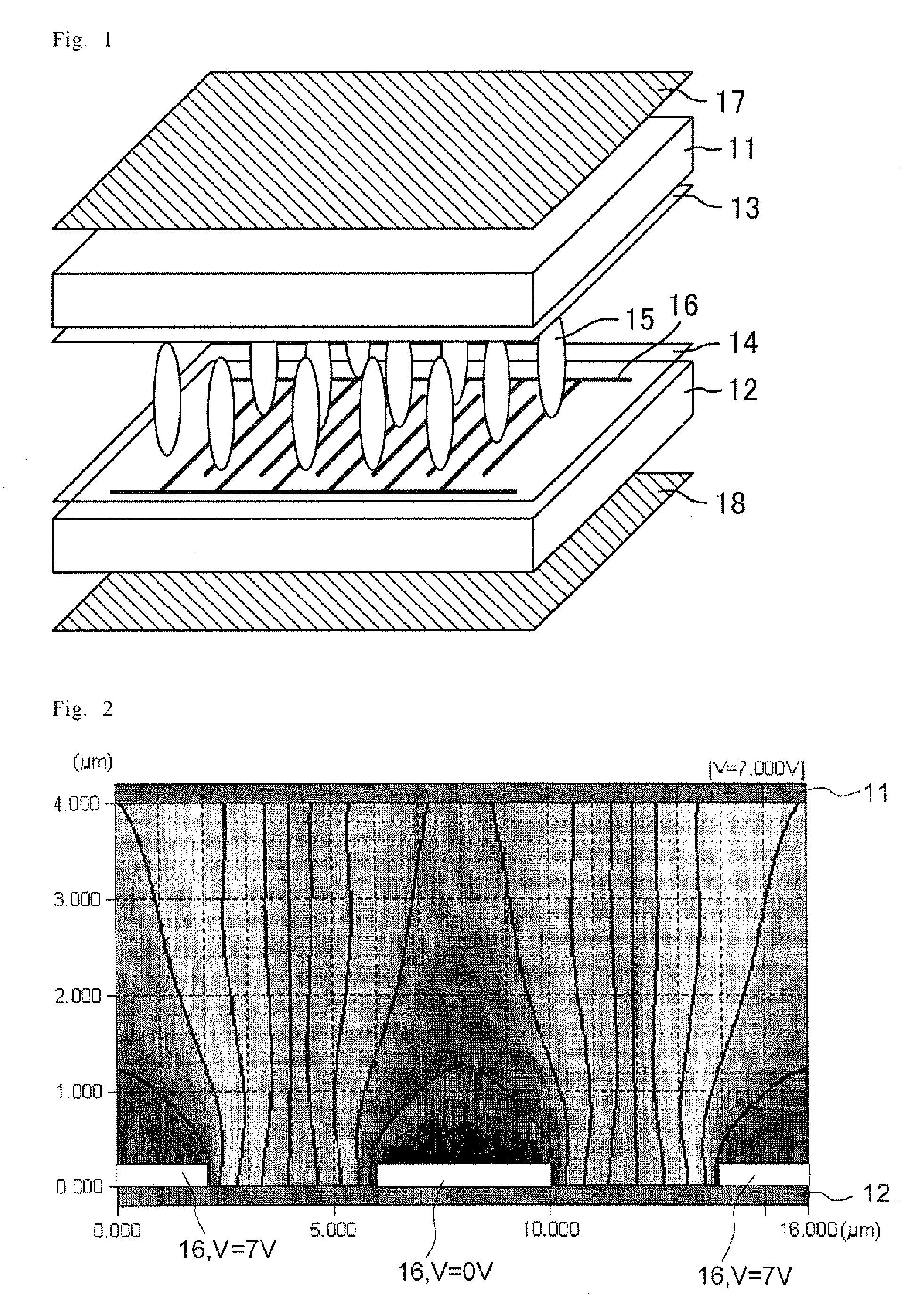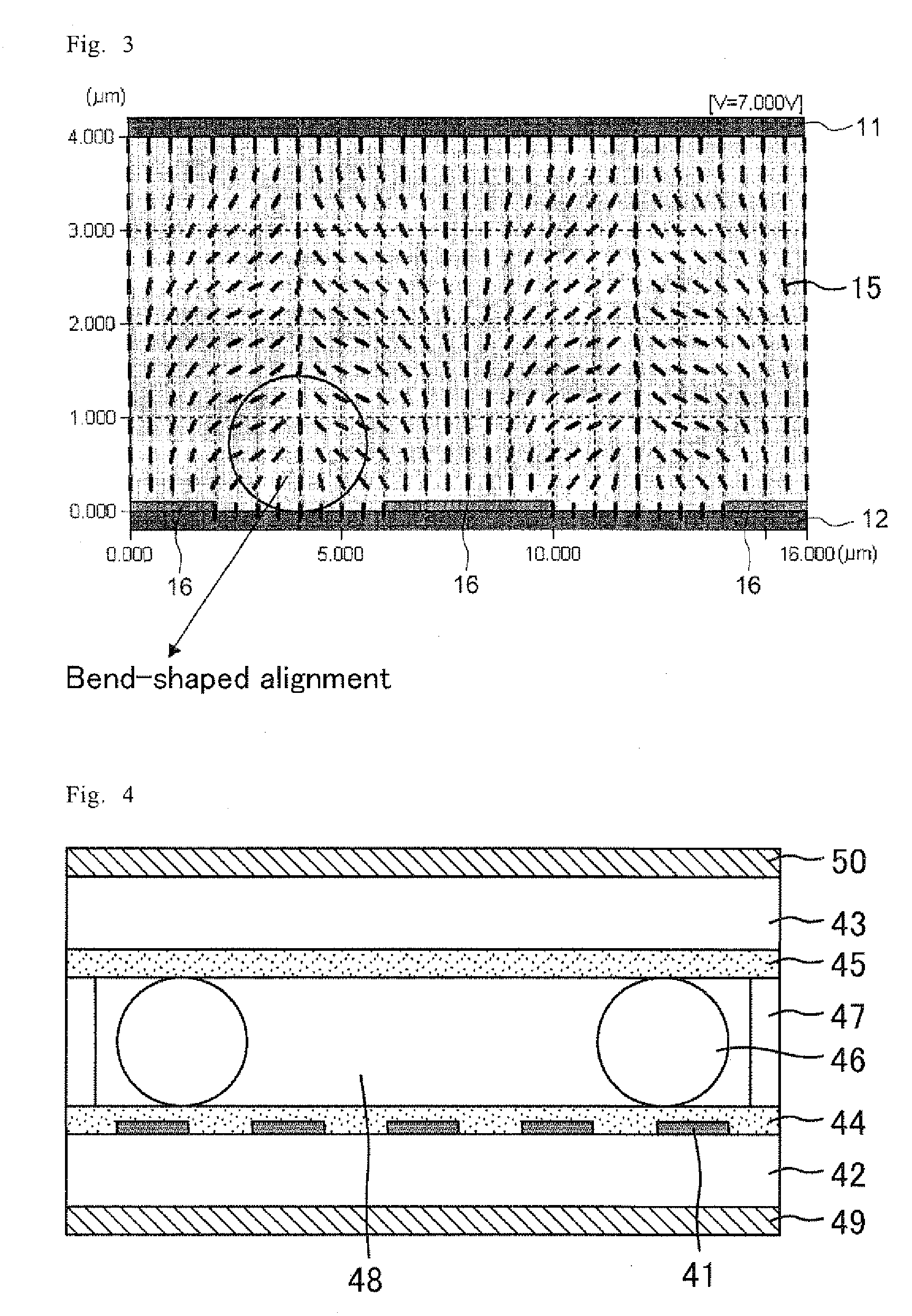Liquid crystal display device comprising a P-type liquid crystal material and a first alignment layer having an anchoring energy
a liquid crystal display and alignment layer technology, applied in non-linear optics, instruments, optics, etc., can solve problems such as light leakage (emission of irregularly polarized light), and achieve the effect of suppressing display defects due to collapse of liquid crystal alignmen
- Summary
- Abstract
- Description
- Claims
- Application Information
AI Technical Summary
Benefits of technology
Problems solved by technology
Method used
Image
Examples
embodiment 1
[0071]In a liquid crystal display device of the present embodiment, distribution of an electric field intensity is formed in a cell by applying an electric field, thereby achieving bend alignment of liquid crystal. Additionally, the liquid crystal display device of the present embodiment is a liquid crystal display device in which an electric field is applied to a homeotropically aligned p-type nematic liquid crystal (nematic liquid crystal having positive dielectric anisotropy) transversely with respect to a substrate surface, wherein a bending array is formed by the electric field application. Further, an alignment orientation of liquid crystal molecules is determined by the electric field. The electric field may have a component parallel to the substrate surface.
[0072]Further, the liquid crystal display device of the present embodiment includes a liquid crystal display element (cell), a driver circuit, and a backlight (an illumination device). Configurations of the driver circuit...
example 1
[0138]FIG. 4 shows a basic configuration of a liquid crystal display element used in a liquid crystal display device of Example 1. First, a polyimide homeotropic alignment film JALS-204 (JSR Corp., 5 wt. %, a γ-butyrolactone solution) was applied to a glass substrate (a lower substrate) 42 that has a comb-shaped electrode 41 comprising ITO by spin-coating. Then, the workpiece was baked at 200° C. for two hours. The film thickness of an alignment film (an alignment layer) 44 was 60 nm in this case.
[0139]In not only Example 1 but also all the examples, the electrode width was set to 4 μm, the electrode spacing was set to 4 μm, and the cell gap was set to 4 μm. Alignment disorder of the liquid crystal depends on electric field intensity. Since the effects of the present invention can be well understood by experiments with a narrower spacing, the electrode spacing (4 μm) that is relatively narrow among normally used electrode spacings was used in all the examples.
[0140]Likewise, an alig...
example 2
[0147]A basic configuration of a liquid crystal display element used in a liquid crystal display device of Example 2 is the same as that shown in FIG. 4. A liquid crystal cell having an electrode width of 4 μm, an electrode spacing of 4 μm, and a cell gap of 4 μm was fabricated by the following method.
[0148]First, a glass substrate 42 that has a comb-shaped electrode 41 comprising ITO was immersed in a 0.01-mol / l chloroform-NMP mixed solution (a mixing ratio (a volume ratio) of chloroform:NMP=1:10) containing a silane coupling material of formula (1) for five minutes. Then, this substrate was dried in dry nitrogen at 120° C. for one hour to form an alignment film (an alignment layer) 44 comprising a chemisorption film.
CF3CF2)17—SiCl3 (1)
[0149]Likewise, an alignment film (an alignment layer) 45 that consists of a chemisorption film comprising the same material as that of the alignment film 44 was formed on a glass substrate 43. Subsequently, 4-micron resin beads 46 (micro pearls SP,...
PUM
| Property | Measurement | Unit |
|---|---|---|
| pre-tilt angle | aaaaa | aaaaa |
| pre-tilt angle | aaaaa | aaaaa |
| pre-tilt angle | aaaaa | aaaaa |
Abstract
Description
Claims
Application Information
 Login to View More
Login to View More - R&D
- Intellectual Property
- Life Sciences
- Materials
- Tech Scout
- Unparalleled Data Quality
- Higher Quality Content
- 60% Fewer Hallucinations
Browse by: Latest US Patents, China's latest patents, Technical Efficacy Thesaurus, Application Domain, Technology Topic, Popular Technical Reports.
© 2025 PatSnap. All rights reserved.Legal|Privacy policy|Modern Slavery Act Transparency Statement|Sitemap|About US| Contact US: help@patsnap.com



